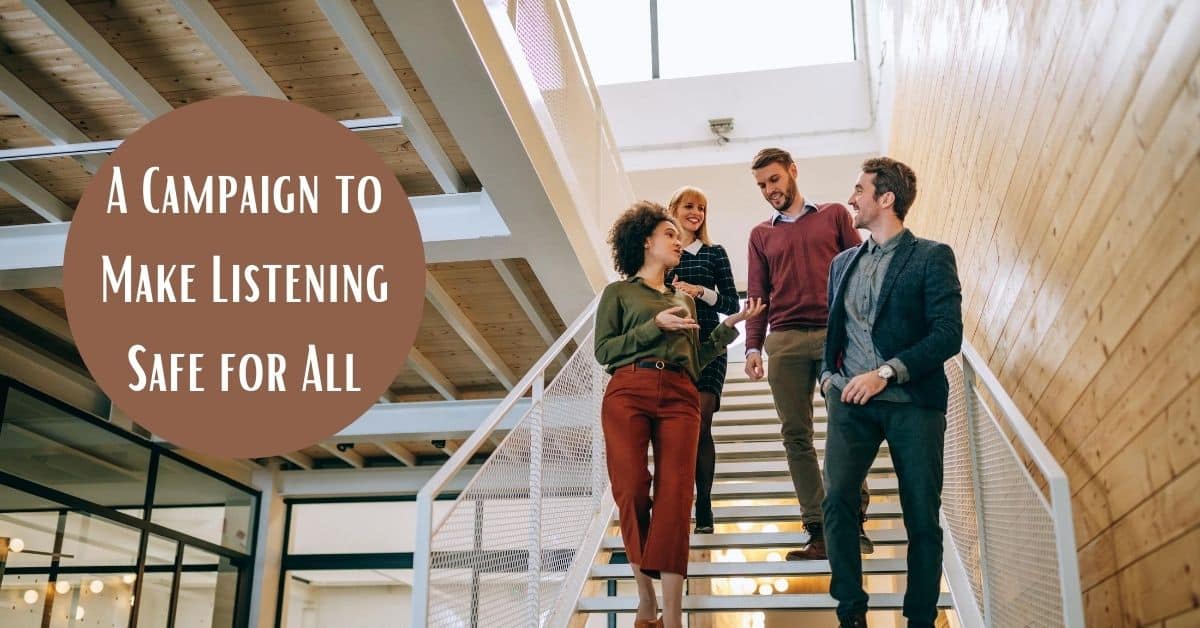
Recently, the World Health Organization (WHO) classified noise as a significant risk to people’s health worldwide. WHO reports that “1.1 billion youth worldwide are at risk of hearing loss because of unsafe listening practices.” The ‘Make Listening Safe Workgroup’ is a World Health Organization (WHO) project within the background of the World Hearing Forum. It is dedicated to building a world where no one’s hearing is compromised by improper listening.
Hearing loss is permanent
The reason why noise is such an issue is that the problem is because hearing loss is permanent. Loud sound exposure causes sensory cells in the ear to wear down. This initially results in a temporary loss of hearing or tinnitus (a ringing sound in the ear). A person attending a loud concert may come out experiencing tinnitus or ‘muffled’ hearing. As the sensory cells rebound, the hearing improves.
If the exposure is repeated, it may cause permanent damage to the sensory cells and other structures, resulting in irreversible loss of hearing. Continued exposure results in the deterioration of hearing loss, increasingly affecting speech comprehension and adversely impacting the individual’s quality of life.
What does ‘safe listening’ mean?
The work group’s principal goal is to facilitate safe listening. WHO recommendations warn that any noise over 85 decibels ( dB) will result in hearing loss. This is about the noise level of a lawnmower. You may be ok to listen to these frequencies for several hours without hearing loss, but the WHO recommends wearing hearing protection when the sounds are louder than 85 dB.
Hearing loss can occur much more rapidly when sounds are louder than 85 dB. Sounds at 100 dB, for example, can damage hearing within an hour, and sounds at 120 dB can permanently damage hearing in minutes.
Besides personal changes, The ‘Make Listening Safe Working Group’ also proposes changes in how industries manufacture two specific products: Personal audio devices and Personal sound amplifier systems (PSAPs).
Safe listening with personal audio systems
You’re probably holding a personal audio system right now – your smartphone. They are what’s used by billions around the world to stream to music, podcasts, and video. Although this is an accepted feature of modern living, the issue is when earbuds or headphones are used at a high volume when using these devices. According to the WHO, “nearly half of all teenagers and young adults (1235 years old) in middle- and high-income countries are exposed to unsafe levels of sound from the use of personal audio devices.”
As far as product recommendations go, the workgroup ‘Make Listening Safe’ recommends:
- The sound output should be less than 100dBA.
- For 80 hours/week the weekly sound dose should be limited to the 80dBA equivalent. Once the threshold is reached, smartphones will limit audio. Some companies are due to implement this feature.
Safe Listening with PSAPs
PSAPs are the main amplifiers of sound for those who don’t consider themselves to have hearing loss. Unregulated by the FDA, these are intended to increase sounds for non-hearing impaired consumers.
Since they’re not regulated like hearing aids, PSAPs can also produce sound at a level that potentially affects a person’s hearing. In a 2015 study examining over 20 PSAPs, all devices had a maximum output level of more than 120dB, 23 exceeded 125dB, and eight exceeded 130dB. To put this into context, 130dB is the equivalent of a jackhammer or power drill.
As far as product recommendations go, the workgroup ‘Make Listening Safe’ recommends:
- If the PSAPs can monitor its weekly sound dose, the average sound dose is a maximum of 80dB for 40 hours.
- If the PSAP cannot monitor its sound dose, the device’s maximum sound must be permanently limited to 95dB for PSAPs.
What you can do to avoid noise
Although these guidelines are undoubtedly sensible, it will be some time before they are enforced on these products worldwide. In the meantime, here’s what we recommend you do to protect yourself from noise-induced hearing loss.
- Use the 60/60 rule. Although the WHO recommends your weekly sound dose should be limited to the equivalent of 80dBA for 80 hours/week, we think it is easier to follow the 60/60 rule. You should only use personal sound devices for a minimum of 60 minutes a day at up to 60 percent of the full volume, then take a break from listening.
- Stick to hearing aids fitted by a qualified hearing professional. Although at first glance PSAPs and hearing aids can appear alike, they could not be any different. One is meant for personal use, while the other is a prescribed hearing loss procedure. Buying an amplifier rather than a hearing aid might seem like the easy way out, but it may do more harm than good.
Maintaining Your Best Hearing Health
We provide comprehensive hearing health services to ensure that you are hearing at your best. Please feel free to contact us today for tips on healthy listening, the latest in hearing technology, or to schedule a hearing exam!
